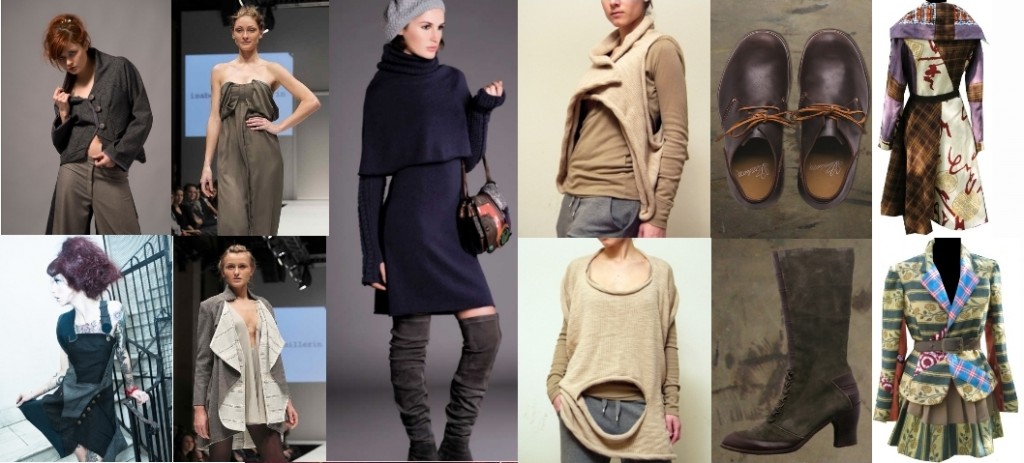 Previous: TheyKey.to, Berlin: Day 2 – Collaboration and Education
Previous: TheyKey.to, Berlin: Day 2 – Collaboration and Education
Tomorrow: TheyKey.to, Berlin: Summary – Where is it heading for? A few insights.
The two most characteristic attributes of TheKey.to – for me in any case – is the designers’ and brands’ candidness on the one side, and their commitment to grow and improve themselves – both, design-wise as ‘sustainability’-wise – on the other.
In this year’s edition, there have been at least 2 dynasties – one of dyers, and one of fibre recyclers – that have taken on the challenge and launched their own brands. A third one will join their ranks, so the rumors go, for the 4th TheKey.to edition in July 2011. Funny enough, all three of them come from southern Europe …
For the two brands present at this edition, it was evident that there is still ground to be covered in various aspects, notably in relation to design. Yet – considering that between their decision to launch a brand, and actually doing it, has passed less than a year, and that their history is the living proof of a strong commitment to succeed, their future development is well worth keeping an eye on.
The two brands I’m talking about are Campeche and Try Again Clothing. The first is an offspring of Clerici, a Como (Italy) based dynasty of industrial dyers and silk producers founded 1887; and the latter the brain child of Filatura Vera a Gerona (Spain) based yarn manufacturer founded in 1952 and who since 1992 focuses on producing yarns exclusively through a garment recycling process.
What is fascinating about those initiatives is the commitment behind them. The decisions are not taken out of a whim, and there is the will to learn, to evolve and to progress – with eyes firmly set upon succeeding commercially in the end. I ask myself the question if it is precisely the generational rather than the ‘only today matters’ attitude that separates them from the generation of newly rich entrepreneurs that dominate the public image of high street brands and the rather appalling consequences of the latter.
The way I perceive it, it is precisely this attitude, approach, commitment and inventiveness that unites these dynasties with the young and rising designer that for now still dominate TheKey.to.
Which obviously calls for an introduction of my very personal ‘Best Of’ list of this 01/2011 TheKey.to edition. In no particular order, here they are:
- RicicLabo is an upcycling label – akin to Junky Styling in the UK – but with a distinguishedly Italian elegance. They work with end of role knitwear fabric, vintage neck ties, 70s and 80s cast away jumpers and have a no frill hand, clear line, classic colours, understatement signature design.
- Isabelle de Hillerin is the label of a very young designer who has chosen to go back to her roots, and work together with Rumanian hand weavers. Her goal is to maintain the the skill and knowledge related to traditional Rumanian hand woven fabrics and fabric patterns – which is being lost as weavers retire or give up due to difficult economic conditions. Her collections are highly elegant, stylish, feminine – and suitable to be worn in the board room, the office, as well as to the theater, the opera and weddings.
- L’Étranger was founded with the idea to create work for Tibetan refugees stuck without work and perspectives in the North of India. Like for all the young entrepreneurs, the design is at the core of the brand’s strategy. The collections are made from organic cotton and cashmere, and are made up of compelling knitwear pieces, and elegant, basic items that combine well both into business as well as casual wear.
- Elementum by Daniela Pais is a range of upper wear garments that each can be worn thanks to an incredibly ingenious design in many different ways. Rather then to try and explain how this in detail works, do check out this video for the past summer collection, and this one here for the current winter collection!
- Andrea Verdura is rediscovering the classic styles of European shoe makers – and adapts on demand so that they are suitable for vegans – always while trying to maintain, rediscover and further develop traditional craftsmanship.
- Adamah Stein again is a social-cum-cultural-with-upcycling-design project that works with, and trains, tailors of disadvantaged communities in Paris and Sénégal. What caught my eye though is the materials they use – discarded prayer rugs and canvas work embroidery pieces – and as a result the lively colours and intriguing patterns of their designs.

Tomorrow: TheyKey.to, Berlin: Summary – Where is it heading for? A few insights.
Previous: TheyKey.to, Berlin: Day 2 – Collaboration and Education

